Do you have a cat? In case you do, you would know they are happy when they purr around you. The same goes for our little honk friends – the ducks.
No, they don’t purr. But there are other ways to express they are happy and satisfied.
You must have seen a flock of ducks coming out of the water waggling their tails! We all did. When ducks waggle their tails, it simply means they are happy.
Yes! A waddling duck is a happy duck. Is that all? Is there no other context to it? Let’s find out here! Our article, today, is all about what it means when a duck wags its tail.
Trust me! It will be a fun ride.
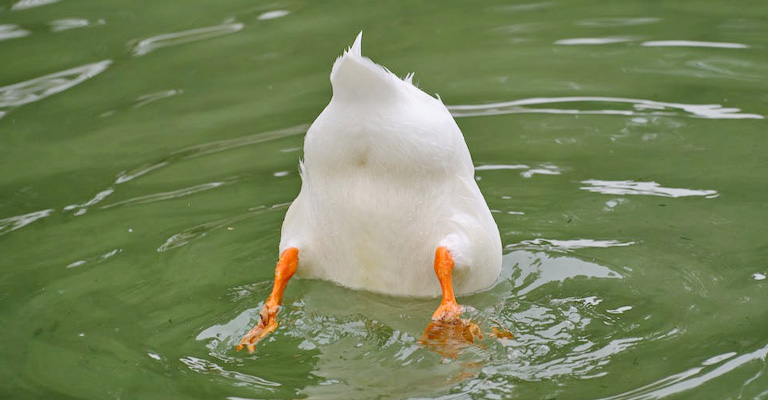
Do You Know?
- Ducks have been domesticated for thousands of years. The most common one is the Pekin duck, raised for its meat and eggs.
- They have shorter legs, almost 4-5 inches. Plus, both legs are positioned apart. This is the reason why they waddle so much for more balance.
- The feathers are waterproof. An oily substance is produced from a gland near the tails. It spreads all over their feathers to their beaks, And that’s how they stay dry in the water.
- Ducks have a dual voice. They will quack and also make quiet, raspy sounds. Male ducks are comparatively quieter than the female ducks.
- They dabble in water. It is a survival hack where they tip forward in water. The tails, however, stick up on top while they look for aquatic plants and small insects.
- They can also fly. Ducks can equally talk, swim, and fly too. During migration, they fly thousands of miles to reach their destination.
- Ducks often tuck their bills into their back feathers and rest one leg at a time. This way, they can reserve body heat and remain alert to threats.
What Does It Mean When A Duck Wags Its Tail?
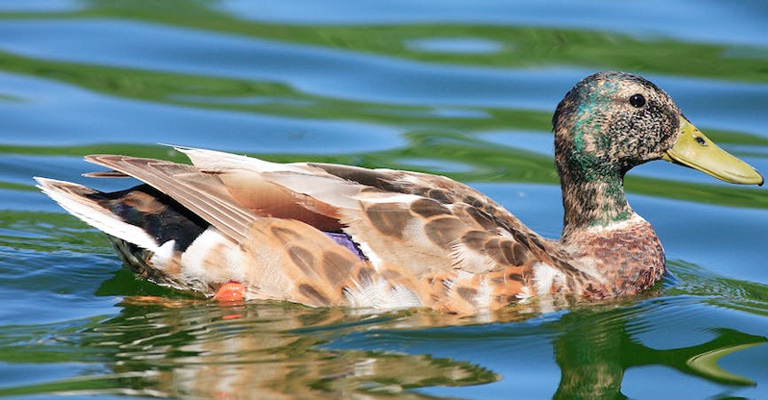
Ducks are social creatures. Like other animals, they communicate with one another. Researchers suggest that, ducks waggle tails for a number of reasons.
May not always be out of happiness, but sometimes they can also waggle tails after coming out of a stressful event. Perhaps, you didn’t know it yet! What else to explore?
Others also believe waggling tails could be a sign of courtship, in an attempt to attract potential mates. More to that, additional theories say that ducks waggle in anxiety, fun, or simply when they are excited.
Keep reading to find out more explanations.
5 Reasons Why Ducks Waggle Their Tails
Here are the five most common reasons why ducks waggle their tails.
1) They Are Happy
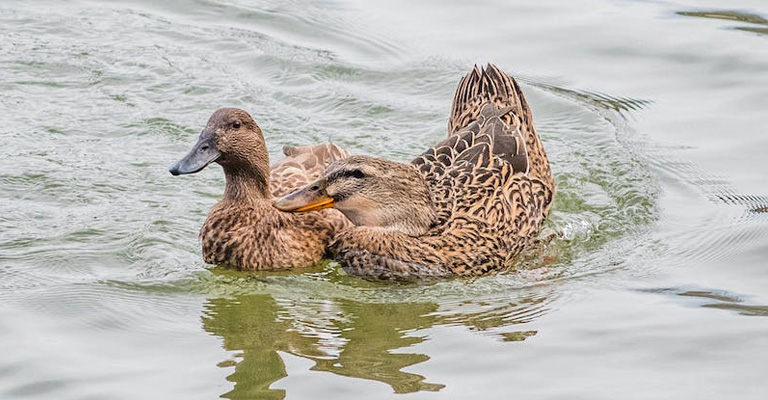
It’s interesting that ducks and dogs almost have the same body language, especially if you raise them near you.
Domestic ducks and dogs often waggle their tails to express that, they are happy and in delightful moods. Sometimes, seeing you makes them happier just like dogs do!
They would waggle their tails when they see you coming towards you. They may also waggle their tails once they see food. Because, well! Who doesn’t love a tasty treat at the start of a day?
Furthermore, ducks would also quack while waggling their tails! It’s absolute happiness in the double package.
2) To Calm Down
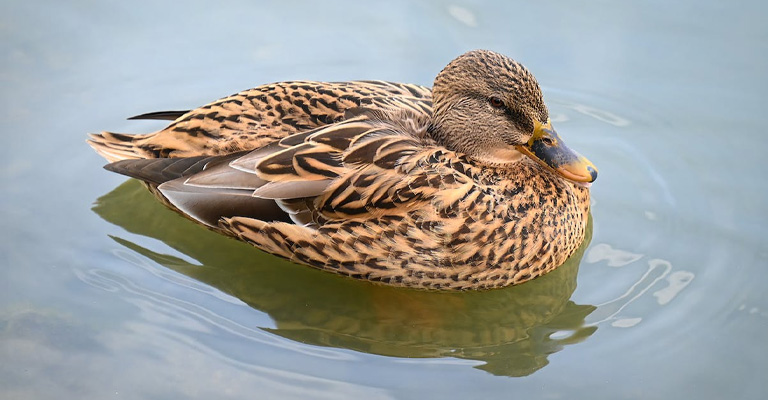
Ducks may seem like social animals. But they won’t leave the opportunity to raise a fight with competitors or invaders. You may see a duck fighting off geese with continuous quacks!
They would peck each other, bite off one another’s feathers, or march toward the invaders. Records show that they can also try and drown the enemy. It’s a total chaos!
Ducks fight for a lot of reasons. But it’s mostly because they wouldn’t want other intruders salvaging their nest or territory. They may not be strictly territorial but ready to protect their nest, and nestlings and win over a mate in a fight.
After a ducking fight, they would waggle their tails in order to calm themselves down. It’s a self-healing technique where they take out all the stress and get back to their normal state of mind!
It’s also not uncommon to waggle the tails right after confronting predators or intruders.
3) Shaking Off Water
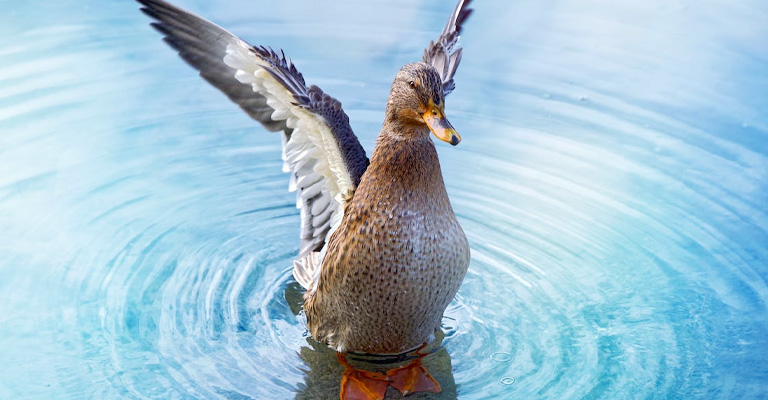
As mentioned earlier, ducks get into the water without getting wet. It is due to an oily substance produced from a gland. They can dive into 100 feet of water and still come out dry.
Their feathers are waterproof. However, even though they are waterproof, they may as well need to shake off a bit to release the water beads stuck between feathers. Plus, they have different types of feathers.
When they get out of the pond, they would simply shake off their entire body and waggle their tails to release water beads. This equally happens when it rains.
4) Probably, They Are Sick
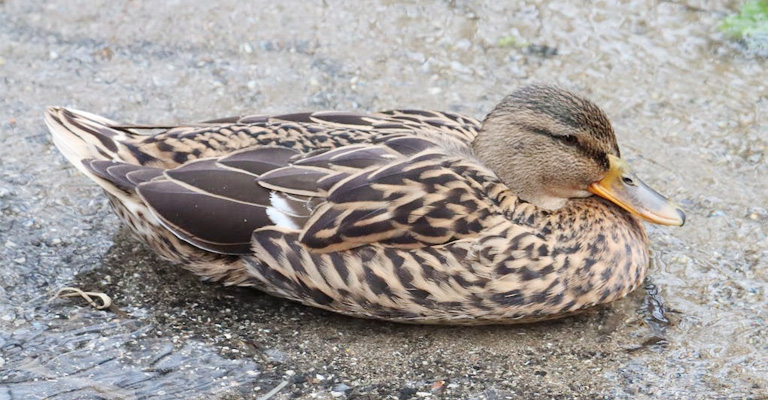
Wet Feather is a common type of sickness followed in ducks. Most ducks have it and lose the integrity of their feathers.
It happens for two different reasons, (1) the preen gland is not producing enough oil, (2) injury or damage to the barbs and barbules of the feathers.
** Note: The barbs carry the feather branches and the barbules hold the adjacent barbs.
If a duck is harmed or damaged globally, such as a fire or feathers being exposed to chemicals, the barbules along with the barbs would be damaged also.
This is when they can suffer from wet feather disease. In addition to that, lack of proper nutrition can also affect their natural bodily function and affect oil production.
When a duck suffers from wet feather disease, you may continuously see them waggle their tails to shake off water. However, when this happens, the ducks have a higher rate of drawing.
Most ducks will heal themselves after a week or two. But even after they don’t, you should treat your ducks properly and consult vets if necessary.
5) Balance
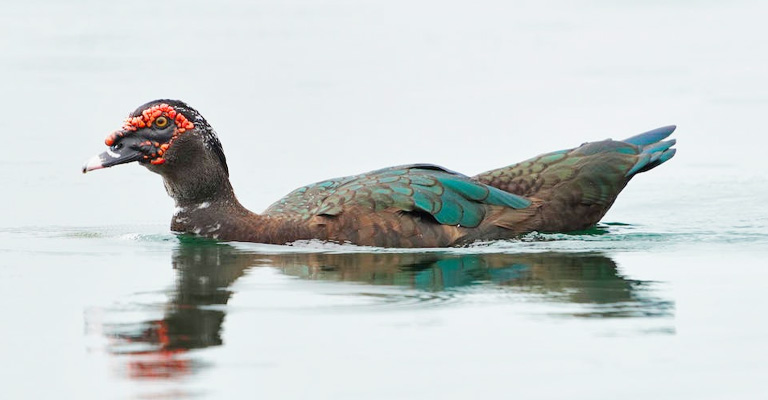
Ducks have a unique combination of legs, as mentioned earlier. The short legs with the bulky body would often require them to waddle while walking.
It may seem cute at first, but they can’t resist it. Waddling is a regular feature associated with walking for ducks. Sometimes, ducks may also wiggle their tail along with waddling.
Experts say it helps them maintain balance when they feel off a bit for a moment. If they don’t do both, they will simply lose balance and fall off. That would be even cuter to see them rolling! But please don’t laugh!
Here are 5 common reasons why a duck may wiggle its tails. However, some also believe male ducks often wiggle their tails during the courtship to impress the female. While it can’t be so strongly put, it’s not entirely impossible either.
In the end,
Let the ducks wiggle and feel happy. If they are happy, let them express their happiness. However, look for the wet feather syndrome when they wiggle too much. If it gets too late, the outcome might not be in favor of the happy ducks!
Now you know, what does it mean when a duck wags its tail. Let us know in the comment section how our article has helped you. Did you know earlier why ducks wiggle?
Also, share our article with others. It will spread knowledge and help us grow too.